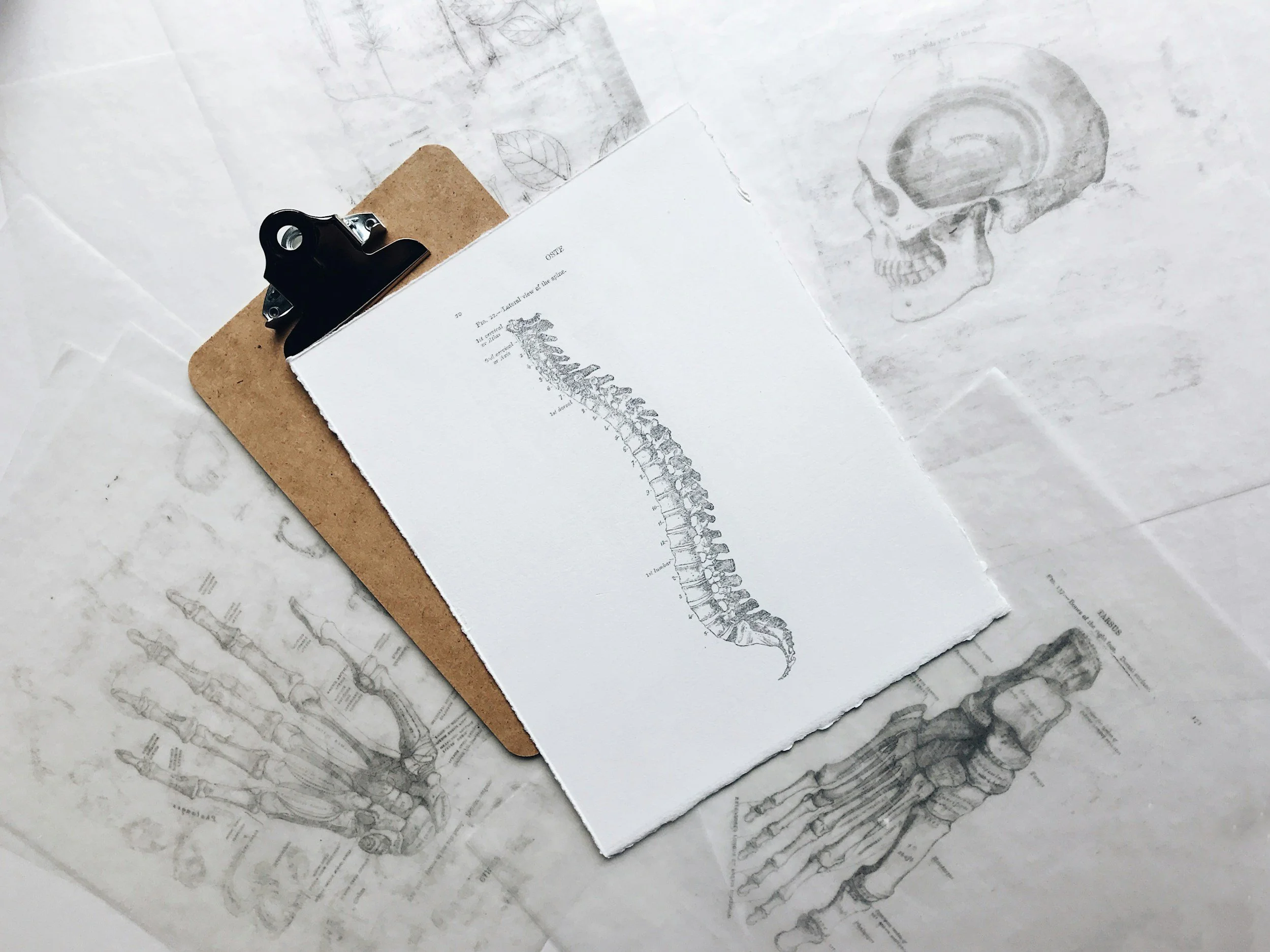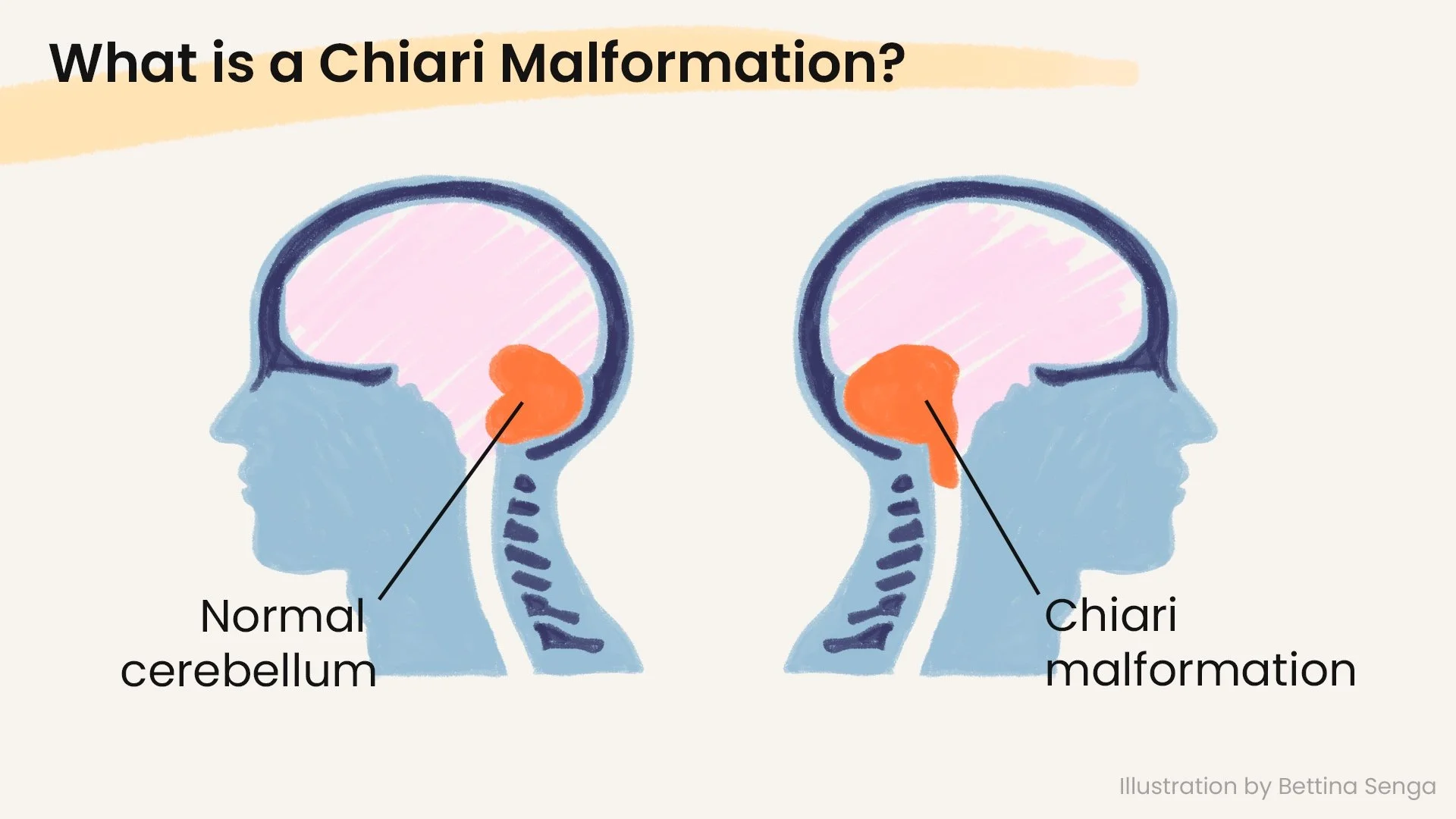
What is a Chiari Malformation?
Chiari: It's a Pain in the Neck (Literally!)
There is a good deal of scientific information on the internet about Chiari Malformations. I won’t repeat all that; instead, refer to some of the links I’ve included below. I like to think about it this way: my brain is too big for my skull.
Trying to find some extra space, the lower part of the back of my brain, called the cerebellar tonsils, has snuck down through the opening at the bottom of my skull where the spinal cord goes up to the skull. If your brain hangs down 5mm, then you get diagnosed with Chiari. My brain hangs down a lot lower than that. Since my cerebellar tonsils are crammed into this little space, it has a few effects. First, it hurts when I exert myself. Even if I just stand up to quickly, I get that classic Chiari pain - sort of like a headache at the top of your neck. Second, the circulation of my cerebrospinal fluid is blocked a bit. It’s supposed to flow freely up and down the spinal column, but mine doesn’t fully circulate - which has caused a syrinx.
Say it with me: Syringomyelia
A syrinx is a cyst filled with spinal fluid. My low hanging brain has caused this little pool of fluid to form, and it doesn’t get washed away because the smooth circulation of the fluid has been interrupted. Even if you’re OK living with the pain caused by chiari, the syrinx can be a problem. As the syrinx gets bigger, it presses against nerves and can cause all sorts of problems - like numbness, tingling, weakness, and even paralysis it seems. When you get an intervention to address the chiari and make more room, then the spinal fluid is supposed to start circulating better again - which in turn will hopefully clear up the syrinx. The syrinx was one of the things that convinced me to get the surgery. You can’t really know if the syrinx is shrinking without getting MRIs. The doctors will carefully measure its size, and over time can watch it.

